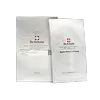What's inside
What's inside
 Key Ingredients
Key Ingredients

 Benefits
Benefits

 Concerns
Concerns

 Ingredients Side-by-side
Ingredients Side-by-side

Aloe Barbadensis Leaf Water
MaskingWater
Skin ConditioningGlycerin
HumectantDipropylene Glycol
HumectantCaprylic/Capric Triglyceride
MaskingCetyl Ethylhexanoate
EmollientNiacinamide
SmoothingDimethicone
EmollientPEG-100 Stearate
Butylene Glycol
HumectantCentella Asiatica Extract
CleansingPaeonia Suffruticosa Root Extract
Skin Protecting1,2-Hexanediol
Skin ConditioningPhenoxyethanol
PreservativeCarbomer
Emulsion StabilisingPanthenol
Skin ConditioningButyrospermum Parkii Butter
Skin ConditioningChamomilla Recutita Flower Extract
MaskingGlyceryl Caprylate
EmollientXanthan Gum
EmulsifyingAdenosine
Skin ConditioningEthylhexylglycerin
Skin ConditioningPotassium Hydroxide
BufferingSodium Polyacrylate
AbsorbentHydrogenated Polydecene
EmollientDisodium EDTA
Parfum
MaskingPropanediol
SolventTrideceth-6
EmulsifyingOctyldodecanol
EmollientHydrolyzed Dna
Skin ConditioningHydrogenated Lecithin
EmulsifyingCeramide NP
Skin ConditioningAsparagus Officinalis Stem Extract
Skin ConditioningGluconolactone
Skin ConditioningCalcium Gluconate
HumectantCaprylyl Glycol
EmollientPotassium Sorbate
PreservativeSodium Benzoate
MaskingAloe Barbadensis Leaf Water, Water, Glycerin, Dipropylene Glycol, Caprylic/Capric Triglyceride, Cetyl Ethylhexanoate, Niacinamide, Dimethicone, PEG-100 Stearate, Butylene Glycol, Centella Asiatica Extract, Paeonia Suffruticosa Root Extract, 1,2-Hexanediol, Phenoxyethanol, Carbomer, Panthenol, Butyrospermum Parkii Butter, Chamomilla Recutita Flower Extract, Glyceryl Caprylate, Xanthan Gum, Adenosine, Ethylhexylglycerin, Potassium Hydroxide, Sodium Polyacrylate, Hydrogenated Polydecene, Disodium EDTA, Parfum, Propanediol, Trideceth-6, Octyldodecanol, Hydrolyzed Dna, Hydrogenated Lecithin, Ceramide NP, Asparagus Officinalis Stem Extract, Gluconolactone, Calcium Gluconate, Caprylyl Glycol, Potassium Sorbate, Sodium Benzoate
Water
Skin ConditioningGlycerin
HumectantYeast
Skin ConditioningPropylene Glycol
HumectantDipropylene Glycol
HumectantGlycyrrhiza Uralensis Root Extract
Skin ConditioningTranexamic Acid
AstringentBetaine
HumectantAloe Barbadensis Leaf Juice
Skin ConditioningXanthan Gum
EmulsifyingPolysorbate 20
EmulsifyingDipotassium Glycyrrhizate
HumectantMethylparaben
PreservativePhenoxyethanol
PreservativeMalus Domestica Fruit Cell Culture Extract
Skin ConditioningDisodium EDTA
Ethylhexylglycerin
Skin ConditioningTriethylhexanoin
MaskingGlycyrrhiza Glabra Root Extract
BleachingDiphenyl Dimethicone
EmollientMentha Haplocalix Extract
MaskingPolyglyceryl-10 Myristate
Skin ConditioningWater, Glycerin, Yeast, Propylene Glycol, Dipropylene Glycol, Glycyrrhiza Uralensis Root Extract, Tranexamic Acid, Betaine, Aloe Barbadensis Leaf Juice, Xanthan Gum, Polysorbate 20, Dipotassium Glycyrrhizate, Methylparaben, Phenoxyethanol, Malus Domestica Fruit Cell Culture Extract, Disodium EDTA, Ethylhexylglycerin, Triethylhexanoin, Glycyrrhiza Glabra Root Extract, Diphenyl Dimethicone, Mentha Haplocalix Extract, Polyglyceryl-10 Myristate
 Reviews
Reviews

Ingredients Explained
These ingredients are found in both products.
Ingredients higher up in an ingredient list are typically present in a larger amount.
Dipropylene Glycol is a synthetically created humectant, stabilizer, and solvent.
This ingredient helps:
Dipropylene glycol is technically an alcohol, but it belongs to the glycol family (often considered part of the ‘good’ alcohols). This means it is hydrating and gentle on skin unlike drying solvent alcohols like denatured alcohol.
As a masking agent, Dipropylene Glycol can be used to cover the smell of other ingredients. However, it does not have a scent.
Studies show Dipropylene Glycol is considered safe to use in skincare.
Learn more about Dipropylene GlycolDisodium EDTA plays a role in making products more stable by aiding other preservatives.
It is a chelating agent, meaning it neutralizes metal ions that may be found in a product.
Disodium EDTA is a salt of edetic acid and is found to be safe in cosmetic ingredients.
Learn more about Disodium EDTAEthylhexylglycerin (we can't pronounce this either) is commonly used as a preservative and skin softener. It is derived from glyceryl.
You might see Ethylhexylglycerin often paired with other preservatives such as phenoxyethanol. Ethylhexylglycerin has been found to increase the effectiveness of these other preservatives.
Glycerin is already naturally found in your skin. It helps moisturize and protect your skin.
A study from 2016 found glycerin to be more effective as a humectant than AHAs and hyaluronic acid.
As a humectant, it helps the skin stay hydrated by pulling moisture to your skin. The low molecular weight of glycerin allows it to pull moisture into the deeper layers of your skin.
Hydrated skin improves your skin barrier; Your skin barrier helps protect against irritants and bacteria.
Glycerin has also been found to have antimicrobial and antiviral properties. Due to these properties, glycerin is often used in wound and burn treatments.
In cosmetics, glycerin is usually derived from plants such as soybean or palm. However, it can also be sourced from animals, such as tallow or animal fat.
This ingredient is organic, colorless, odorless, and non-toxic.
Glycerin is the name for this ingredient in American English. British English uses Glycerol/Glycerine.
Learn more about GlycerinPhenoxyethanol is a preservative that has germicide, antimicrobial, and aromatic properties. Studies show that phenoxyethanol can prevent microbial growth. By itself, it has a scent that is similar to that of a rose.
It's often used in formulations along with Caprylyl Glycol to preserve the shelf life of products.
Water. It's the most common cosmetic ingredient of all. You'll usually see it at the top of ingredient lists, meaning that it makes up the largest part of the product.
So why is it so popular? Water most often acts as a solvent - this means that it helps dissolve other ingredients into the formulation.
You'll also recognize water as that liquid we all need to stay alive. If you see this, drink a glass of water. Stay hydrated!
Learn more about WaterXanthan gum is used as a stabilizer and thickener within cosmetic products. It helps give products a sticky, thick feeling - preventing them from being too runny.
On the technical side of things, xanthan gum is a polysaccharide - a combination consisting of multiple sugar molecules bonded together.
Xanthan gum is a pretty common and great ingredient. It is a natural, non-toxic, non-irritating ingredient that is also commonly used in food products.
Learn more about Xanthan Gum